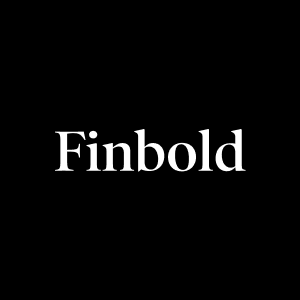BitcoinWorld An Interview With Tranchess In an exclusive interview with BitcoinWorld , we got the chance to speak with Danny Chong , Co-founder of Tranchess Danny, you’ve had a significant career in TradFi before co-founding Tranchess. How has this experience shaped your approach to building DeFi solutions, particularly in designing products that appeal to both traditional investors and crypto natives? As Co-founder of Tranchess, I have over 17 years of experience in investment banking at firms like Société Générale, BNP Paribas, and Crédit Agricole which have taught me the importance of structured risk management and clear investment options, principles that TradFi has refined over decades. My journey in decentralised finance began with an opportunity to run a “build-a-bank” project during my career in investment banking. Leading a team of IT professionals, I built emerging products that are client-facing and new to the traditional finance system. TradFi’s strength lies in its ability to segment risk and align products with diverse investor needs, but it often stifles innovation with bureaucracy. DeFi, by contrast, is liberating, open, and permissionless, yet it can overwhelm users with complexity and high-risk volatility. My experience shaped Tranchess to bridge these worlds by simplifying DeFi without sacrificing sophistication. Our products draw on TradFi’s risk tranching concepts used in structured finance to create varied risk-return profiles from a single asset and make DeFi accessible. The name “Tranchess” came from the words “tranche” and “chess”. “Tranche” is a TradFi term for varied risk solutions, whereas “Chess” is based on international chess, a game centred on strategy and optimisation. For traditional investors, we offer familiar structures with clear risk levels, like fixed-income-style yields, which resonate with their preference for stability. For crypto natives, we provide high-yield, leveraged options catering to their appetite for risk and innovation. By combining TradFi’s clarity with DeFi’s transparency and automation, we create a platform that empowers both groups to engage confidently, addressing the bottleneck of DeFi’s complexity. Tranchess recently highlighted its $CHESS Token Buyback Programme. Could you elaborate on the strategic thinking behind this initiative and how it compares, from your TradFi lens, to corporate equity buybacks in terms of signaling confidence and delivering value to token holders? The $CHESS Token Buyback Programme is market agnostic, reliant on Tranchess’ roadmap rather than on the ever-changing market dynamics. It is a strategic move to enhance value for our token holders and signal Tranchess’s confidence in our long-term growth. In DeFi, token economics are critical, and buybacks help manage circulating supply, potentially stabilising or increasing token value while rewarding our community. The programme uses a portion of revenue to repurchase $CHESS tokens from the open market, reducing supply and aligning with our commitment to sustainable ecosystem growth, signalling our confidence in $CHESS. In TradFi, buybacks signal financial health, indicating that companies believe their stock is undervalued and have excess capital to return to shareholders. Similarly, our $CHESS buyback demonstrates Tranchess’s robust revenue, showing we’re not just surviving but thriving in a volatile market. Unlike TradFi, where buybacks often benefit institutional shareholders, our programme directly supports our decentralised community, enhancing $CHESS’s utility in governance and rewards. The key difference is DeFi’s transparency, where every buyback transaction is on-chain and verifiable, unlike in TradFi. This initiative reflects my honed belief in disciplined capital allocation, adapted to DeFi’s open ethos to deliver tangible value to holders. Tranchess aims to offer more than basic yields through its structured products like QUEEN, BISHOP, and ROOK. Can you explain the core concept behind these offerings and how they cater to different risk appetites while aiming for sustainable, layered yields? Tranchess’s structured products, QUEEN, BISHOP, and ROOK, are designed to bring TradFi’s risk tranching to DeFi, offering tailored risk-return profiles from a single underlying asset, like BTC or ETH, to meet diverse investor needs. The core concept is to segment risk and reward, making DeFi accessible and appealing to varying risk appetites. QUEEN tracks the underlying asset’s price with staking rewards, ideal for crypto natives seeking market exposure with added yield. BISHOP offers fixed-income-style yields, appealing to risk-averse investors, including those from TradFi, who prioritise stability. ROOK provides leveraged exposure, catering to high-risk, high-reward seekers comfortable with volatility. These products are denominated in USDC for clarity, lowering entry barriers by making profit and loss intuitive. By leveraging DeFi’s automation, we enable users to switch between tranches seamlessly on one platform, ensuring simplicity, stability, and cost efficiency, unlike TradFi’s complex derivatives markets. Sustainability comes from diversified revenue streams, such as yield farming and validator services, which reduce reliance on volatile token emissions. This approach, inspired by TradFi’s structured finance but enhanced by blockchain’s transparency, ensures layered yields that balance risk and reward, attracting conservative investors and DeFi enthusiasts. You’ve spoken about RWA tokenization as a pivotal trend. How does Tranchess view the integration of RWAs into its yield-focused offerings, and what role do you see regulatory clarity playing in accelerating the adoption of tokenized real-world assets on platforms like the BNB Chain? RWA tokenisation is a game-changer. We see it as a natural extension of our yield-focused structured products. Tokenised stocks, bonds, or real estate, or RWAs, add real value to DeFi and support our objective of providing modular, risk-adjusted yields. We must explore how to integrate RWAs into our framework, potentially allowing users to stake tokenised assets or create tranches with RWA-backed yields, combining TradFi’s familiarity with DeFi’s efficiency. Regulatory clarity is critical to accelerate RWA adoption, especially on scalable platforms like BNB Chain, which is seeing a push by VanEck for a spot ETF which could pave the way for innovation. Clear frameworks, like those emerging in the UAE or Singapore, legitimise tokenised assets, assuaging institutional concerns about compliance and security. As evidenced by the RWA category’s explosive growth from $200 million to $2 billion in just six months, RWAs run the risk of becoming niche if they are not regulated. If they are, however, they could greatly accelerate DeFi’s TVL. Beyond structured products, Tranchess also offers liquid staking. Could you shed some light on your liquid staking solutions and how they provide users with both yield and liquidity, and the security measures Tranchess employs? Tranchess’ liquid staking solutions allow users to stake assets like Ethereum while maintaining liquidity through tokenised staking positions, which can be traded or used in DeFi protocols. This addresses a key pain point in traditional staking, where assets are locked, limiting flexibility. By staking through Tranchess, users earn validation rewards, which are often higher than TradFi savings rates. This benefit of yield and liquidity appeals to both crypto natives seeking DeFi composability and TradFi investors accustomed to liquid assets. Security is paramount, especially given DeFi’s history of breaches. Tranchess employs rigorous measures, including regular smart contract audits, multi-signature wallets for treasury management, and robust governance to prevent centralised failures. Our team prioritises network security, drawing on my TradFi experience where risk controls were non-negotiable. While staking carries risks, we mitigate them through diversified validator partnerships and transparent on-chain operations, ensuring user funds are protected and accessible. The $CHESS token is central to Tranchess’s governance and rewards system. Beyond the buyback, how does Tranchess ensure active community participation and align the protocol’s growth with the interests of $CHESS holders, especially through mechanisms like veCHESS? The $CHESS token is the backbone of Tranchess’s governance and rewards, empowering our users to shape the protocol’s future. Beyond the buyback programme, we foster active community participation through the veCHESS mechanism. veCHESS allows users to lock $CHESS for a set period to gain enhanced voting power and higher yield boosts on our products, incentivising long-term commitment. This aligns holder interests with protocol growth by rewarding those who contribute to governance and stability, drawing on my TradFi understanding of stakeholder alignment. We encourage participation via transparent governance proposals, where veCHESS holders vote on upgrades, fee structures, or new products, ensuring community input drives Tranchess’s evolution. Regular X spaces and talking to users on social media keep users engaged, while $CHESS staking rewards distribute protocol profits, reinforcing economic incentives. By balancing accessibility with incentives, we make governance inclusive yet rewarding for dedicated holders. This approach has helped sustain our community since our $1.5 million seed round in 2021, and it’s key to maintaining protocol health in DeFi’s competitive landscape. Given Tranchess’ success, such as reaching over $1 billion in TVL relatively quickly, where do you see the broader DeFi space evolving in the next couple of years, and what is Tranchess’s vision for continuing to innovate and lead in this evolving landscape? A deeper integration with real-world assets, more institutional adoption, and more transparent regulatory frameworks are probably going to be characteristics of DeFi’s next few years. We at Tranchess see this as a chance to further our objective of providing yield strategies that are adjusted for risk while preserving transparency and composability. As we have done from day one, we will continue to innovate at the intersection of structured products and liquid staking, developing tools that serve experienced DeFi users and new institutions alike. Finally, for our audience looking to explore DeFi or deepen their involvement, what key piece of advice would you offer, particularly when considering protocols that aim to bridge the best of TradFi and DeFi like Tranchess? Instead of focussing only on short-term yield attractiveness, start with protocols that prioritise long-term sustainability, cybersecurity, transparency, strong team setup, and sound risk frameworks. As DeFi matures, those who successfully strike a balance between innovation and resilience will rise to the top. Anyone bridging the gap between TradFi and DeFi, as we do at Tranchess, is embracing the agility and innovation that DeFi allows whilst introducing the discipline and standards of traditional finance into a decentralised, open-access setting. Stay tuned for more thought-provoking content and engaging interviews on Bitcoinworld.co.in , World of Cryptocurrency & Blockchain News. This post An Interview With Tranchess first appeared on BitcoinWorld and is written by Keshav Aggarwal


















